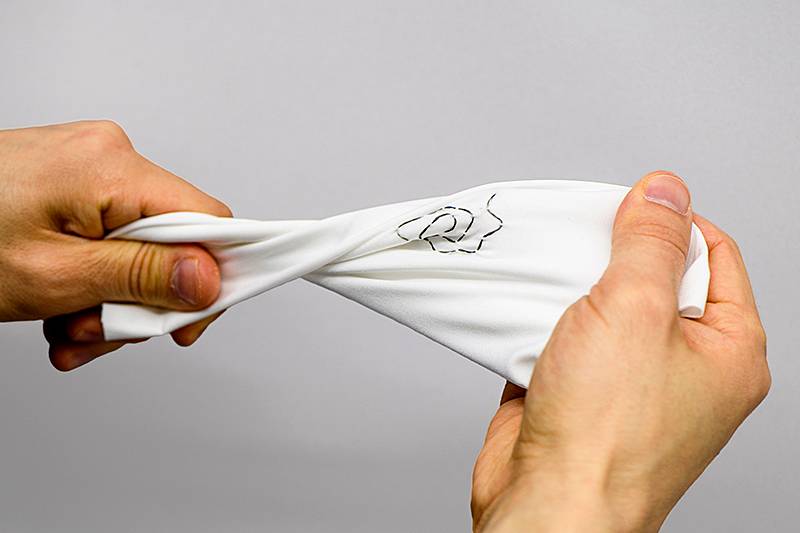Purdue University engineers have developed a method to transform existing cloth items into battery-free wearables resistant to laundry. These smart clothes are powered wirelessly through a flexible, silk-based coil sewn on the textile.
In the near future, all your clothes will become smart. These smart cloths will outperform conventional passive garments, thanks to their miniaturized electronic circuits and sensors, which will allow you to seamlessly communicate with your phone, computer, car and other machines. This smart clothing will not only make you more productive but also check on your health status and even call for help if you suffer an accident. The reason why this smart clothing is not all over your closet yet is that the fabrication of this smart clothing is quite challenging, as clothes need to be periodically washed and electronics despise water.
Purdue engineers have developed a new spray/sewing method to transform any conventional cloth items into battery-free wearables that can be cleaned in the washing machine.
“By spray-coating smart clothes with highly hydrophobic molecules, we are able to render them repellent to water, oil and mud,” said Ramses Martinez, an assistant professor in Purdue’s School of Industrial Engineering and in the Weldon School of Biomedical Engineering in Purdue’s College of Engineering. “These smart clothes are almost impossible to stain and can be used underwater and washed in conventional washing machines without damaging the electronic components sewn on their surface.”
This technology is published in the May 25 edition of Nano Energy. Martinez’s laboratory group has several videos about the technology on its dedicated YouTube channel:
The rigidity of typical waterproof garments and their reduced breathability make them feel uncomfortable after being worn for a few hours.
“Thanks to their ultrathin coating, our smart clothes remain as flexible, stretchable and breathable as conventional cotton T-shirts,” Martinez said.
Unlike common wearables, the Purdue smart clothes do not require batteries for powering. By simply harvesting energy from Wi-Fi or radio waves in the environment, the clothes are capable of powering the circuitry sewn on the textile.
One example is a battery-free glove that illuminates its fingertips every time the user is near a live cable to warn about the possibility of an electric shock. Another is a miniaturized cardiac monitoring system sewn on a washable sweatband capable of monitoring the health status of the wearer.
“Such wearable devices, powered by ubiquitous Wi-Fi signals, will make us not only think of clothing as just a garment that keeps us warm but also as wearable tools designed to help us in our daily life, monitor our health and protect us from accidents,” Martinez said.
“I envision smart clothes will be able to transmit information about the posture and motion of the wearer to mobile apps, allowing machines to understand human intent without the need of other interfaces, expanding the way we communicate, interact with devices, and play video games.”
This technology can be fabricated in conventional, large-scale sewing facilities, which are expected to accelerate the development and commercialization of future smart clothes.
Martinez and his team have worked with the Purdue Research Foundation Office of Technology Commercialization to protect the intellectual property. The innovations are patent pending. For information on licensing a Purdue innovation, contact the Office of Technology Commercialization at [email protected].


